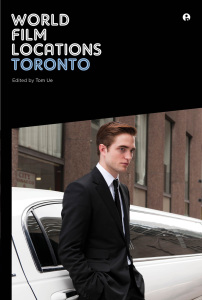A Book Review By Carmen Siu.
One hundred and eighty years young, the city of Toronto has a lot to boast about. ‘T-Dot’ is celebrated as a world-class city for its unique cultural diversity; vibrant music, film and literary scenes; and even, at times, its sports teams. But you’re more likely to hear rave reviews about the city from tourists and visitors rather than from Torontonians themselves, who are…well, proud, but modest about it. (Reflecting on ‘Tronno’ and the people who live here, I’ve thought, more than once, of Bilbo Baggins’ description of Hobbits: ‘Never had any adventures or did anything unexpected.’)
In May 2013, news broke that then-mayor Rob Ford had been videotaped smoking crack cocaine with local drug dealers. The allegation and its fallout — a torrent of denials, further accusations, arrests and charges of the mayor’s associates, terminations and resignations of the mayor’s staff, character attacks and defamation lawsuit threats — fueled newspaper headlines for more than a year. Toronto, which comprised six municipalities that merged together to become one ‘megacity’ in 1998, saw itself starkly divided between Ford supporters and detractors. And to the chagrin of many Torontonians, the city’s dirty laundry was aired for the world to see — most notably, the mayor’s March 2014 guest appearance on Jimmy Kimmel Live became a moment of supreme bizarreness and embarrassment.
The trip that Ford and his entourage made to Los Angeles was ostensibly to promote Toronto as a filmmaking destination, although Ford later said he wished he had more time to discuss the city on Kimmel. With serendipitous timing, Intellect Books published World Film Locations: Toronto one month later. Edited by English language and literature scholar Tom Ue and featuring contributions from scholars, writers and cinéastes (about half of whom have direct ties to Toronto, according to local photography credits and contributor biographies), World Film Locations: Toronto offers exactly what Ford did not: a reminder of Toronto’s varied history and thriving relationship with film.
At a slender 128 pages, World Film Locations: Toronto is not an in-depth critical study of the city in cinema. Nor is it an exhaustive directory of every film ever shot in or made about Toronto. Rather, the book functions as a collage of meaningful Toronto film moments, put together by many hands. Films surveyed come from all across the genre spectrum, including crime thrillers (The Silent Partner, Daryl Duke, 1978), holiday classics (A Christmas Story, Bob Clark, 1983), dramas (Good Will Hunting, Gus van Sant, 1997), superhero blockbusters (X-Men, Bryan Singer, 2000), documentaries (Bowling for Columbine, Michael Moore, 2002) and musicals (Hairspray, Adam Shankman, 2007).
Most of the book’s pages comprise ‘Scenes,’ two-page spreads that feature one film each. The spreads are spacious and predominantly visual, containing film stills from particular scenes shot in Toronto locales and a shot of that site as it is today. Approximately half a page is allotted to accompanying text, and the book’s many contributors make it a multi-voiced experience — depending on who is serving as the tour guide on any particular film, the text may retell a famous scene, describe how the Toronto location was treated (depicted as-is or disguised as someplace else) or shed light on the history of Toronto or the venue.
The ‘Scenes’ spreads make for light reading, a little like getting a (long) postcard in the mail. They are supplemented by nine essays exploring specific themes or elements of Toronto’s film history. Authored by scholar Richard Dennis, writer David Fleischer, Toronto International Film Festival programmer Steve Gravestock, TIFF director and CEO Piers Handling and volume editor Tom Ue, the essays cover topics ranging from particular themes (youth and anonymity); filmmakers (David Cronenberg); artistic movements (Toronto New Wave); special landmarks, heritage sites and general city architecture (Yonge Street, the Distillery District and dwellings that signify Toronto); and local film institutions (TIFF). They provide a more substantial starting point for further research.
To be sure, the book’s slim size means that it simply cannot be as comprehensive as a reader may like. Ue and the contributors have therefore selected topics that are particularly significant for Toronto. Although this approach lends the book a scrapbook- or photo album-like authenticity, it also means that the volume’s content is not always balanced. For example, the book’s ‘Scenes’ spreads are arranged chronologically from 1966 to 2013 – but 27 of the 44 featured films are dated 2000 or later. The reasons for this influx of films shot in Toronto, primarily related to economic incentives to bring productions here, are perhaps not sufficiently covered given that most films in the collection anonymize or disguise Toronto rather than depicting it as itself.
World Film Locations: Toronto contains an array of voices and perspectives. Although it is fairly small, it offers something for everyone. It focuses on the city’s growth over the past two decades while keeping an optimistic eye on its future. And it is slightly jumbled at times. In other words, it’s more than a little bit like Toronto itself.
Carmen Siu is an independent scholar and editor from Toronto, Canada. She never had any adventures or did anything unexpected.

